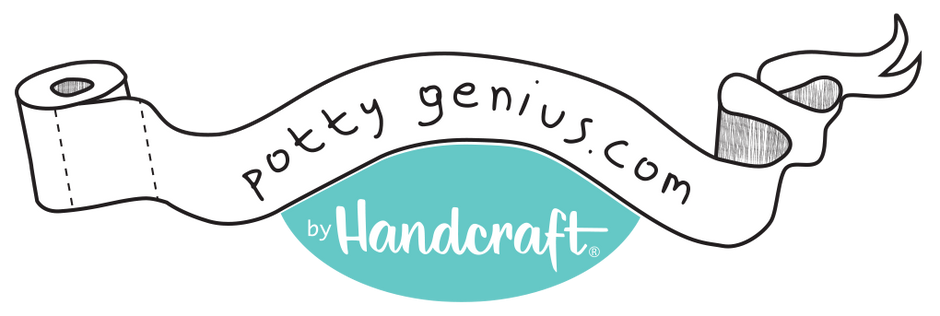We’ve all heard the phrase “It takes a village to raise a child.” The same applies to potty training, which often involves more people than just the primary caregiver. For most modern American children, their potty training comes from more than just their mothers. Many children are cared for by fathers, grandparents, nannies, babysitters, daycare centers, and other care providers. The most important potty training tip is that all caregivers are on the same page. The key to successful potty training is consistency. If toddlers are offered the opportunity to use the potty at home but use diapers the entire day at daycare, they may have difficulty toilet training and take longer to learn. When it comes to potty training, it is important to share your potty training plan with everyone involved in your child’s care.
Potty Training Tips for Shared Potty Training
- If your child is attending daycare, ask if the daycare center follows the American Academy of Pediatrics’ Toilet Training Guidelines. Daycares should provide positive reinforcement and encouragement during toilet training. Potty training should follow a consistent routine and plan while being considerate of each family’s cultural values as well as children’s special needs.
- Find out how the daycare center conducts toilet training and consider whether their plan is well-aligned with your own. Some daycare centers have strict toilet training practices. If the center’s potty training methods are not consistent with your own practices and values, you may want to consider enrolling your child in another daycare that is more flexible.
- Type up a written potty training plan and give it to all care providers including nannies, babysitters, grandparents, and other relatives who may care for your child. Ask that they adhere to it as much as possible. A written plan should include some combination of the following:
- Taking the child to the toilet to attempt to use the restroom at designated intervals (usually every 2 hours or so).
- Discuss what type of toilet training equipment you will use and exactly how you plan to use it. For example, you might have a potty training timer that goes off at scheduled potty times or you might have a special potty training chair your child uses.
- Provide a specific praise and reward system to follow. How will you praise or reward the child for using the potty? Remember, consistency is important here.
- Specify how to handle accidents when they occur. This may include getting the child changed, reminding the child about using the potty, and avoiding punishment or making the child feel guilty.
- Decide whether you want the child to wear diapers, training pants, underwear, or have naked time. Whatever you decide, talk to other care providers about it and try to be as consistent as possible. That said, it is okay if you have to change things up a little bit. Your child may not have the option to go naked at daycare but still may benefit from that diaper free time at home in the evenings.
- Record keeping is essential. If your child has multiple care providers, create a tracking sheet and encourage everyone to record the child’s daily progress and regressions. Writing this information down can help with continuity and consistency, and keep everybody involved informed.
- Communicate consistently and effectively. Care providers should discuss the child’s progress each day and make sure that parents are aware of any challenges that may arise during potty training.
- Dress your child appropriately. If you’re sending your child off to daycare or to another care provider’s home, make sure they are dressed for potty training success. Dress your child in clothing that is easy to remove. Avoid belts, overalls, onesies, and tight jeans. Choose loose-fitting clothing that your child can learn to easily remove himself.
- Consider a diet high in fruits and vegetables. A high-fiber diet can help your child avoid constipation and make potty training easier. If you pack your child’s lunch, consider these foods. If the daycare center or other caregiver provides the meals, talk to them about dietary options.
- Purchase some potty training books and encourage the caregiver to read them to your child. This may be more difficult in large daycare centers. However, many daycares have potty training books of their own that they may read to age-appropriate children. Talk to your daycare center to find out what they can do.
- Accommodate any special needs your child may have. If your child has developmental delays or disabilities, be sure to accommodate those appropriately and discuss these accommodations thoroughly with other care providers.

